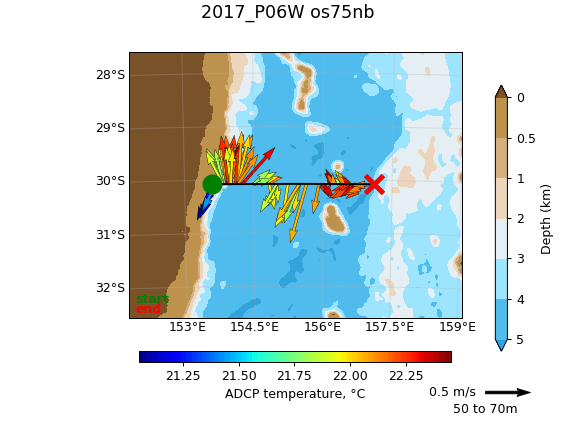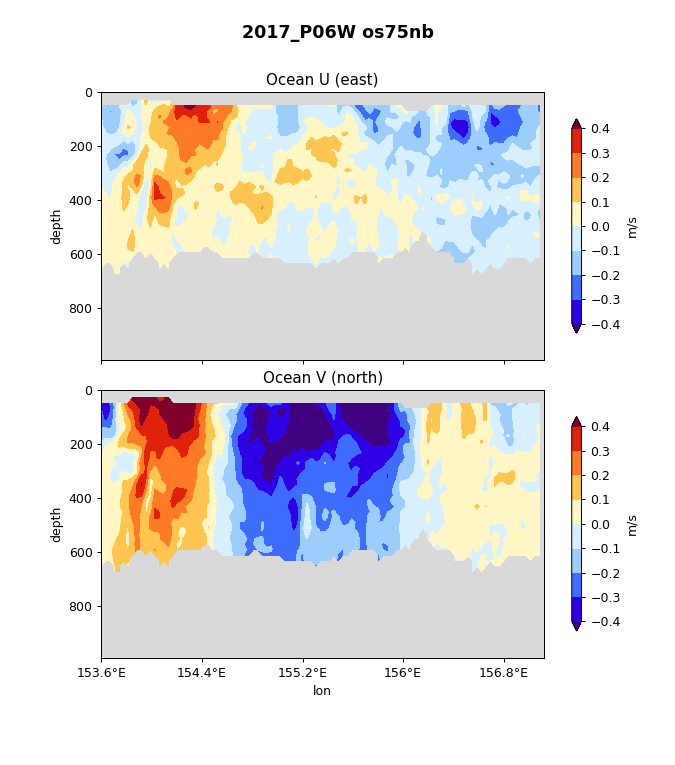The US GO-SHIP program includes routine shipboard ADCP measurements, presented here. Several ships are used for these cruises, so the instrumentation varies among the cruises. All data shown here were collected with profilers made by Teledyne RD Instruments, some with their original 150-kHz "narrowband" instrument (nb150), and others with 150-kHz, 75-kHz, and/or 38-kHz Ocean Surveyors (os150, os75, and os38, respectively). The Ocean Surveyors can be operated simultaneously with two types of pings: uncoded pings ("narrowband" or NB), and coded pings ("broadband" or BB). The former provides better range but less vertical resolution than the latter. When both types of pings were used, they are processed independently and presented here as separate data sets. In addition to the velocity measurements, transducer temperature measurements are shown. These should be regarded as providing only very approximate and qualitative information; because of the thermal mass of the transducers, and their position inside a well in the hull, their temperature can differ substantially from that of the ambient seawater.
CTD and other sensor data from the occupied stations are archived at CCHDO. Lowered ADCP data are collected and processed by A. Thurnherr, and the LADCP processed data are served at University of Hawaii. We are working to get them archived with The NOAA National Centers for Environmental Invormation (NCEI).
Acquisition and processing of these shipboard ADCP measurements has been funded by the National Science Foundation grants OCE-0223505, OCE-0752970, and OCE-1437015.
Data and figures are presented via a "cruise table" or a "gallery" of cruise tracks. For each cruise and sonar we provide a set of links to data, tides, and a grid of plots.
This web page is a work in progress. The original web page is here.
netCDF data description
For each cruise, the processed shipboard ADCP data and a corresponding estimate of the barotropic tide are provided as netcdf files, individually and aggregated by cruise and by year. For more information, follow this link.


